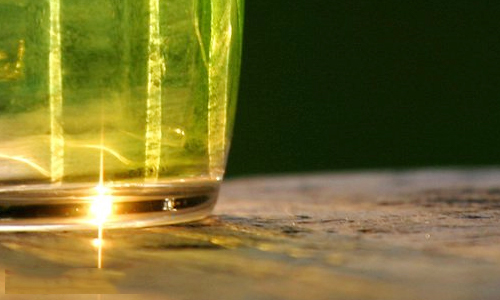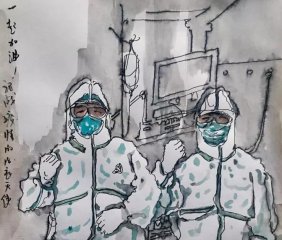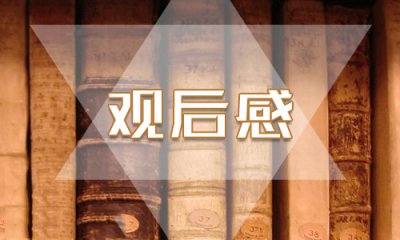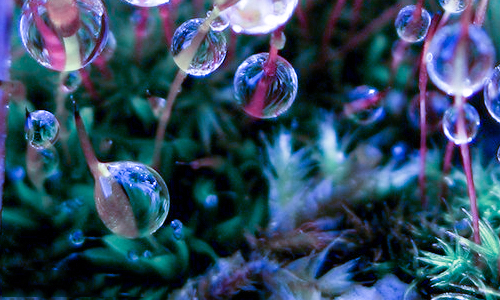以万圣节为话题的英语作文素材大全
万圣节是外国的节日,那么你会写关于万圣节的英语作文吗?想要了解小学生们是怎么写的吗?下面是小编为大家带来的有关以万圣节为话题的英语作文素材大全【5篇】,希望大家喜欢。

万圣节作文【篇一】
Halloween has always been a holiday filled with mystery, magic and superstition. it began as a celtic end-of-summer festival during which people felt especially close to deceased relatives and friends. for these friendly spirits, they set places at the dinner table, left treats on doorsteps and along the side of the road and lit candles to help loved ones find their way back to the spirit world.
Today's halloween ghosts are often depicted as more fearsome and malevolent, and our customs and superstitions are scarier too. we avoid crossing paths with black cats, afraid that they might bring us bad luck. this idea has its roots in the middle ages, when many people believed that witches avoided detection by turning themselves into cats. we try not to walk under ladders for the same reason. this superstition may have come from the ancient egyptians, who believed that triangles were sacred; it also may have something to do with the fact that walking under a leaning ladder tends to be fairly unsafe. and around halloween, especially, we try to avoid breaking mirrors, stepping on cracks in the road or spilling salt.
But what about the halloween traditions and beliefs that today's trick-or-treaters have forgotten all about? many of these obsolete rituals focused on the future instead of the past and the living instead of the dead. in particular, many had to do with helping young women identify their future husbands and reassuring them that they would someday--with luck, by next halloween!--be married.
In 18th-century ireland, a matchmaking cook might bury a ring in her mashed potatoes on halloween night, hoping to bring true love to the diner who found it. in scotland, fortune-tellers recommended that an eligible young woman name a hazelnut for each of her suitors and then toss the nuts into the fireplace. the nut that burned to ashes rather than popping or exploding, the story went, represented the girl's future husband. (in some versions of this legend, confusingly, the opposite was true: the nut that burned away symbolized a love that would not last.) another tale had it that if a young woman ate a sugary concoction made out of walnuts, hazelnuts and nutmeg before bed on halloween night, she would dream about her future husband. young women tossed apple-peels over their shoulders, hoping that the peels would fall on the floor in the shape of their future husbands' initials; tried to learn about their futures by peering at egg yolks floating in a bowl of water; and stood in front of mirrors in darkened rooms, holding candles and looking over their shoulders for their husbands' faces.
Other rituals were more competitive. at some halloween parties, the first guest to find a burr on a chestnut-hunt would be the first to marry; at others, the first successful apple-bobber would be the first down the aisle.
Of course, whether we're asking for romantic advice or trying to avoid seven years of bad luck, each one of these halloween superstitions relies on the good will of the very same "spirits" whose presence the early celts felt so keenly. ours is not such a different holiday after all!
万圣节作文【篇二】
When the harvest moon rises on October 31, little hobgoblins, spooky ghosts, ghoulish witches and gremlins — their young faces hidden behind grotesque masks — will go forth to frighten friends and neighbors and to threaten them with "Trick or Treat ".
Halloween (AII Hallows Eve) as the name implies, is a nighttime holiday, the one night in the year when the child's world turns to pure fantasy. Children take all the lead parts while parents and other adults play the supporting roles. Encouraged by teachers and merchants and the remembrance of the good time they had the earlier year, children (from 3 to 11 years old) start preparing their costumes and Halloween decorations weeks ahead. Although parents help the children very much prepare the costumes, on Halloween they must pretend to be frightened by the masked visions that suddenly appear. There will be little witches in long black dresses with tall-pointed hats and magic broomsticks to carry them over the rooftops — to a neighbor's house in the next block. Ghosts in sheets run with tell-tale sneakers and half socks showing; and terrible pirates with skull and cross-bones painted on their three-cornered hats. Some carry jack-o'-lanterns but all carry bags or UNICEF boxes marked "Trick or Treat", which fill up very fast.
Teenagers have their fun playing tricks that sometimes get rather rough. They throw eggs or tomatoes at passing motorists , mark up windows and windshields with hard-to-erase candle wax, roll pumpkins down long hills, carry away porch furniture and garbage can covers, engrave graffiti on fences, or do whatever bad things occur to them as they go around looking for ways to "let off steam". Police officers are alert but they only arrest those caught doing real damage. In most communities there are school dances or block parties to help redirect the energies of the youthful pranksters. Business firms offer prizes for the best costumes and recreation directors help plan the party, but the young people themselves take charge of the entertainment and the decorations — a necessary part of Halloween. Dried corn stalks, pumpkin faces, and piles of apples create the harvest atmosphere; and cutouts of witches on their brooms, goblins, ghosts and black cats symbolize the witchcraft aspect of the holiday. The freshments — apple cider, popcorn and pumpkin pie, and witches made of spicy ginger cookies — also carry out both themes.
There is an occasional adult Halloween Dance in a bright orange and black setting, with paper-made black cats, witches and grinning skeletons floating above the dance floor. But Halloween has become mainly a young people's holiday — and the younger the child the more exciting he finds it.
万圣节作文【篇三】
One story about Jack, an Irishman, who was not allowed into Heaven because he was stingy with his money. So he was sent to hell. But down there he played tricks on the Devil (Satan), so he was kicked out of Hell and made to walk the earth forever carrying a lantern.
Well, Irish children made Jack's lanterns on October 31st from a large potato or turnip, hollowed out with the sides having holes and lit by little candles inside. And Irish children would carry them as they went from house to house begging for food for the village Halloween festival that honored the Druid god Muck Olla. The Irish name for these lanterns was "Jack with the lantern" or "Jack of the lantern," abbreviated as " Jack-o'-lantern" and now spelled "jack-o-lantern."
The traditional Halloween you can read about in most books was just children's fun night. Halloween celebrations would start in October in every elementary school.
Halloween is a western festival. It’s on Oct.31th. It’s a happy time for children because at night they put on the masks to attend the party. After the party, they knock at someone’s door and say: “trick or tread”. It means if you don’t give me the candies, I will play trick on you! At last kids can get enough candies for one year
万圣节作文【篇四】
Halloween's origins date back to the ancient Celtic festival of Samhain (pronounced sow-in).
The Celts, who lived 2,000 years ago in the area that is now Ireland, the United Kingdom, and northern France, celebrated their new year on November 1. This day marked the end of summer and the harvest and the beginning of the dark, cold winter, a time of year that was often associated with human death. Celts believed that on the night before the new year, the boundary between the worlds of the living and the dead became blurred. On the night of October 31, they celebrated Samhain, when it was believed that the ghosts of the dead returned to earth. In addition to causing trouble and damaging crops, Celts thought that the presence of the otherworldly spirits made it easier for the Druids, or Celtic priests, to make predictions about the future. For a people entirely dependent on the volatile natural world, these prophecies were an important source of comfort and direction during the long, dark winter.
To commemorate the event, Druids built huge sacred bonfires, where the people gathered to burn crops and animals as sacrifices to the Celtic deities.
During the celebration, the Celts wore costumes, typically consisting of animal heads and skins, and attempted to tell each other's fortunes. When the celebration was over, they re-lit their hearth fires, which they had extinguished earlier that evening, from the sacred bonfire to help protect them during the coming winter.
By A.D. 43, Romans had conquered the majority of Celtic territory. In the course of the four hundred years that they ruled the Celtic lands, two festivals of Roman origin were combined with the traditional Celtic celebration of Samhain.
The first was Feralia, a day in late October when the Romans traditionally commemorated the passing of the dead. The second was a day to honor Pomona, the Roman goddess of fruit and trees. The symbol of Pomona is the apple and the incorporation of this celebration into Samhain probably explains the tradition of "bobbing" for apples that is practiced today on Halloween.
By the 800s, the influence of Christianity had spread into Celtic lands. In the seventh century, Pope Boniface IV designated November 1 All Saints' Day, a time to honor saints and martyrs. It is widely believed today that the pope was attempting to replace the Celtic festival of the dead with a related, but church-sanctioned holiday. The celebration was also called All-hallows or All-hallowmas (from Middle English Alholowmesse meaning All Saints' Day) and the night before it, the night of Samhain, began to be called All-hallows Eve and, eventually, Halloween. Even later, in A.D. 1000, the church would make November 2 All Souls' Day, a day to honor the dead. It was celebrated similarly to Samhain, with big bonfires, parades, and dressing up in costumes as saints, angels, and devils. Together, the three celebrations, the eve of All Saints', All Saints', and All Souls', were called Hallowmas.
万圣节作文【篇五】
One story about Jack, an Irishman, who was not allowed into Heaven because he was stingy with his money. So he was sent to hell. But down there he played tricks on the Devil (Satan), so he was kicked out of Hell and made to walk the earth forever carrying a lantern.
Well, Irish children made Jack's lanterns on October 31st from a large potato or turnip, hollowed out with the sides having holes and lit by little candles inside. And Irish children would carry them as they went from house to house begging for food for the village Halloween festival that honored the Druid god Muck Olla. The Irish name for these lanterns was "Jack with the lantern" or "Jack of the lantern," abbreviated as " Jack-o'-lantern" and now spelled "jack-o-lantern."
The traditional Halloween you can read about in most books was just children's fun night. Halloween celebrations would start in October in every elementary school.
关于万圣节有这样一个故事。是说有一个叫杰克的爱尔兰人,因为他对钱特别的吝啬,就不允许他进入天堂,而被打入地狱。但是在那里他老是捉弄魔鬼撒旦,所以被踢出地狱,罚他提着灯笼永远在人世里行走。
在十月三十一日爱尔兰的孩子们用土豆和萝卜制作“杰克的灯笼”,他们把中间挖掉、表面上打洞并在里边点上蜡烛。为村里庆祝督伊德神的万圣节,孩子们提着这种灯笼挨家挨户乞讨食物。这种灯笼的爱尔兰名字是“拿灯笼的杰克”或者“杰克的灯笼”,缩写为Jack-o'-lantern 。
现在你在大多数书里读到的万圣节只是孩子们开心的夜晚。在小学校里,万圣节是每年十月份开始庆祝的。孩子们会制作万圣节的装饰品:各种各样桔红色的南瓜灯。
以万圣节为话题的英语作文素材大全相关文章:
★ 万圣节的英语作文范文素材大全2020【5篇】 - 5068儿童网
★ 万圣节传统介绍英语作文80词精选7篇 - 5068儿童网
★ 万圣节英语作文80词初一作文精选7篇 - 5068儿童网

























